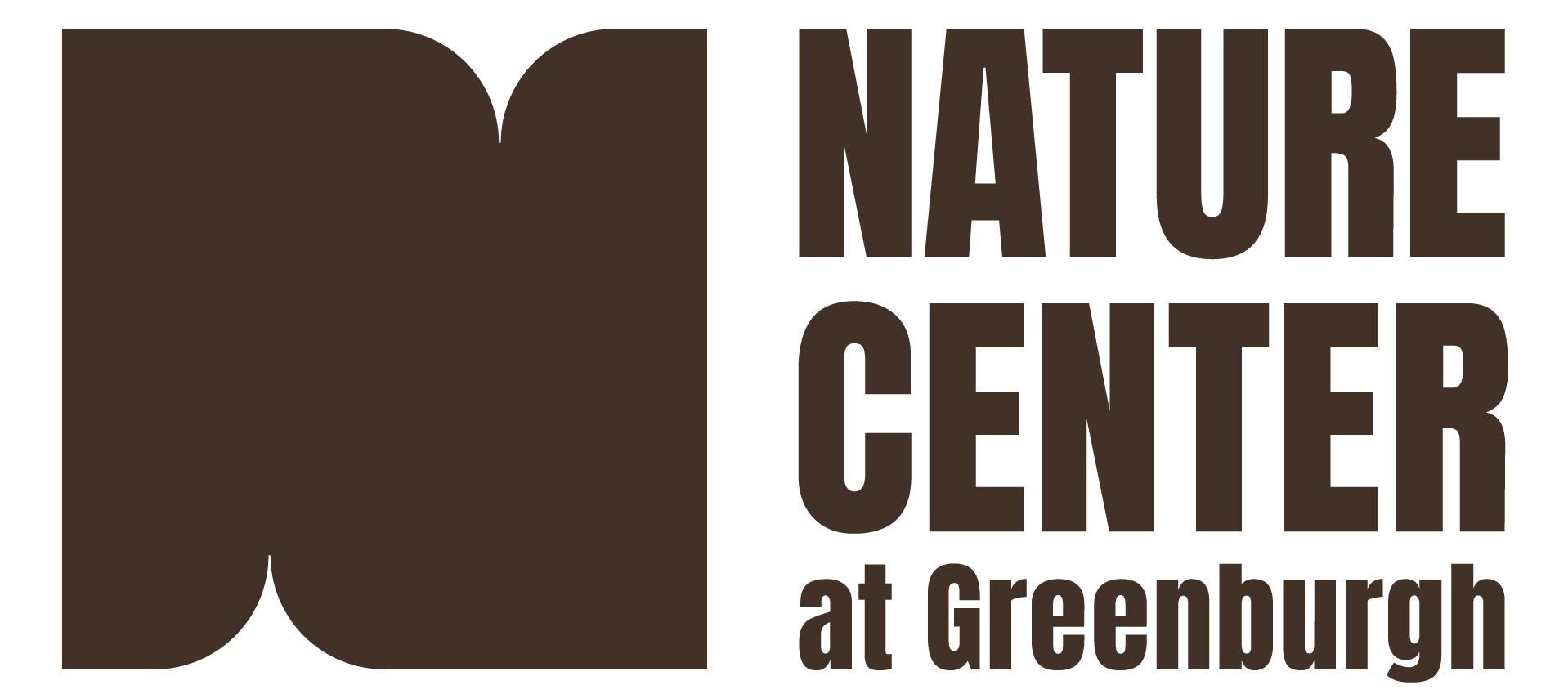
Long before Paul Revere made his historic ride, Redbuds were alerting everyone to the arrival of spring.
The Eastern Redbud (Cercis canadensis) is a small understory tree that shares the dappled edges of woodlands with two other American classics – Amelanchier and Flowering Dogwood, both featured here in earlier posts. Amelanchier (Serviceberry) is the first to bloom, followed by Redbud, and then Flowering Dogwood. If you are looking for a small flowering tree, skip the invasive Callery (Bradford) pear, take a pass on the Asian cherries, and go for one of these historic native beauties.
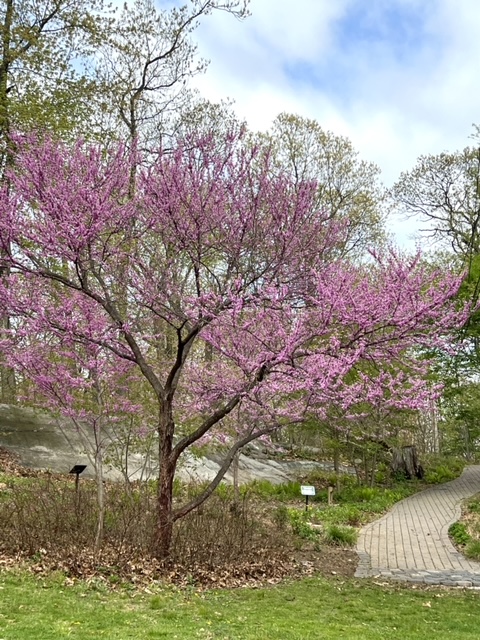
Redbuds are unusual in that the flowers emerge along the branches, stems, and even the trunk of the tree. The flowers range from soft pink to deep fuchsia, and sometimes even in white. The tree is in the legume family and the flowers do look like pea blossoms. Long-tongued bees, like carpenter bees, reach deep into the flowers to sip nectar and emerge covered in pollen. The seeds are encased in something like pea pods and may remain on the tree all winter.
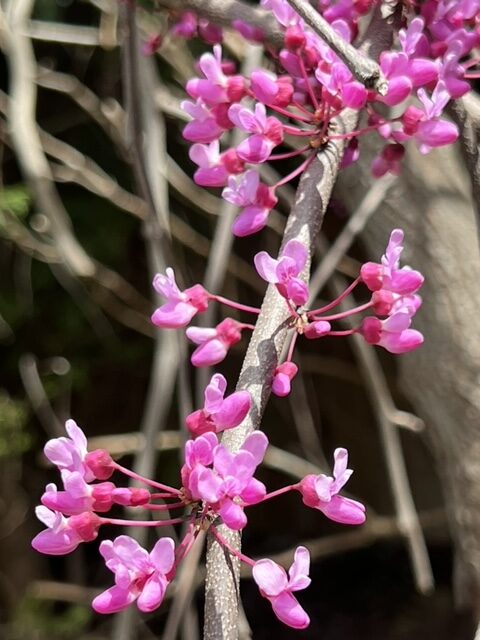
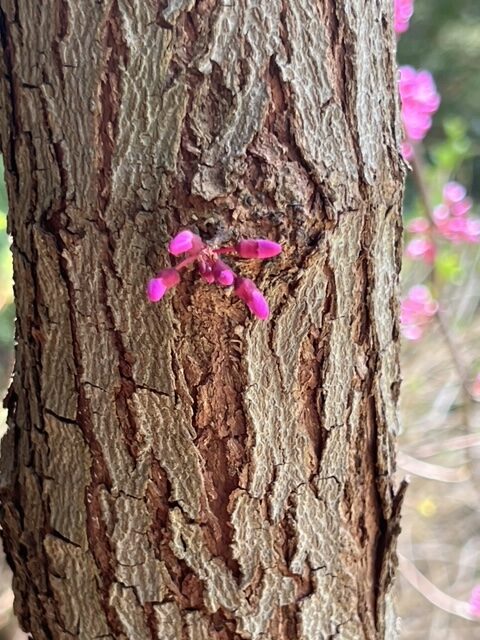
The leaves of Redbuds are large, somewhat shiny, heart-shaped, and are the host for Henry’s elfin butterflies. Perfect for smaller properties, the trees rarely exceed 25 feet in height. They have a rounded shape and look pretty even in winter. Fall color typically is not spectacular, but one recent introduction, ‘Forest Pansy,’ has beautiful purple leaves that turn deep red in the fall. And there is an interesting weeping form called ‘Lavender Twist’ that resulted from a natural mutation that has since been propagated by horticulturists.
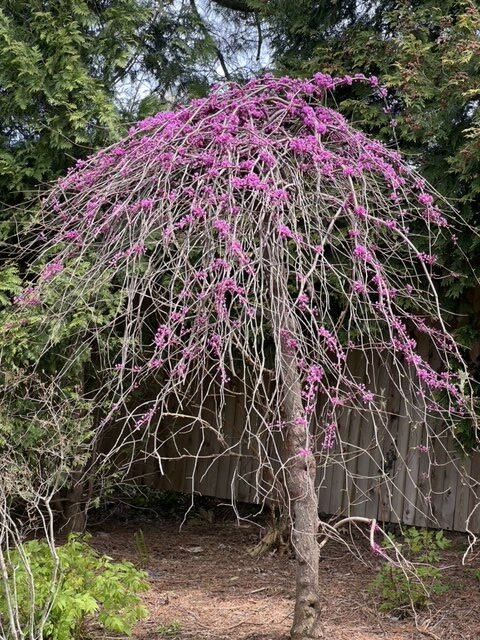
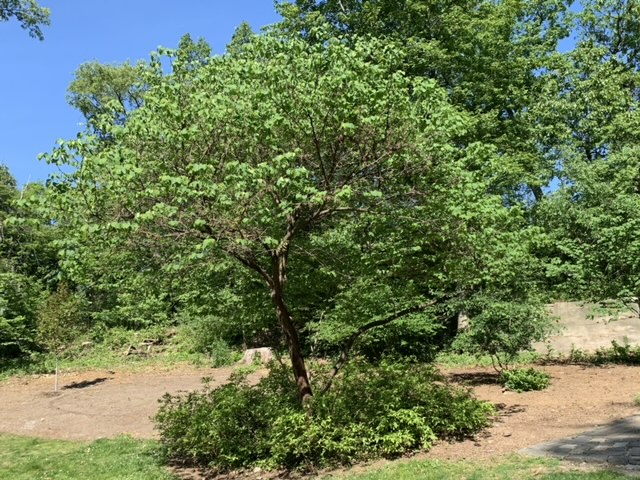
The flowers of the Redbud are edible – either fresh, boiled, or fried. Native Americans ate the flowers, and also used the dried bark of Redbud as a spice. The seeds are edible, too, when roasted.
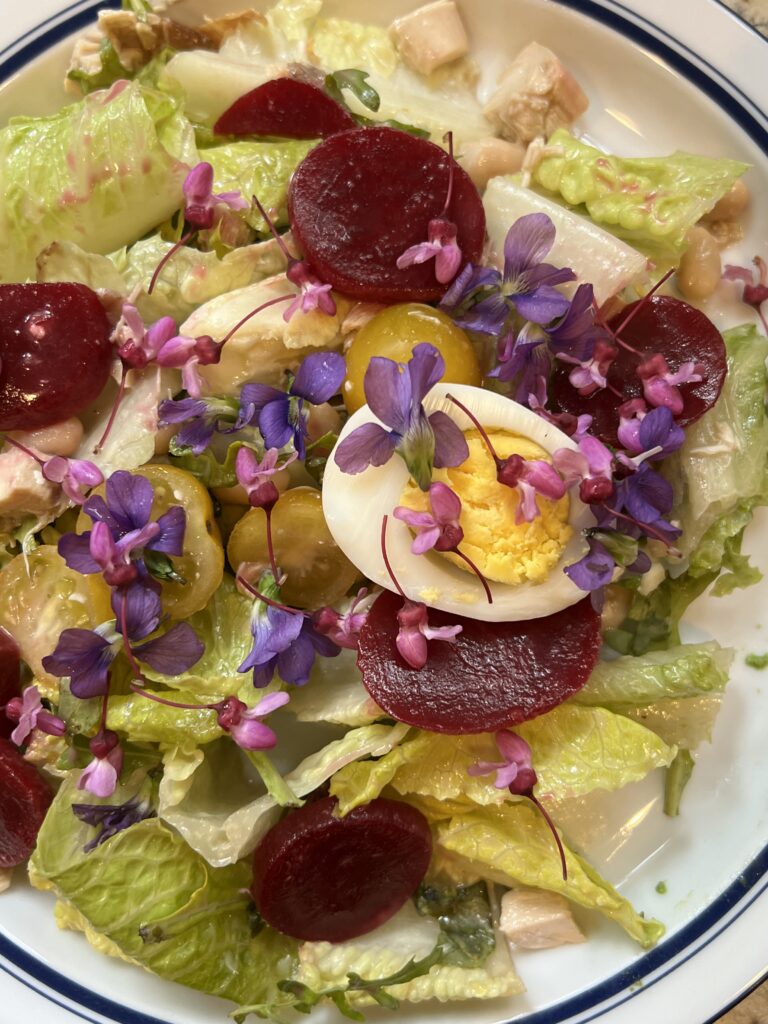
Our local Redbuds, Cercis canadensis, evolved in the forests of the Eastern US, from southeastern New York to parts of Florida, and are hardy in zones 4 to 9. They are understory plants that grow in shade, but they flower best with more sun. They are happy in average garden soil and are well-suited to suburban yards. There are related species of Redbuds native to the dry heat of Texas, Nevada, and California that will survive in zones 8 and 9.
Redbuds really do have a connection to colonial US history. George Washington wrote in his diary about his particular interest in Redbuds. His initial preference for European plants was fading, and he became increasingly interested in indigenous American plants. He collected Redbud seeds from local forests and planted trees he grew from seed on his own property, no doubt increasing the popularity of our native tree.
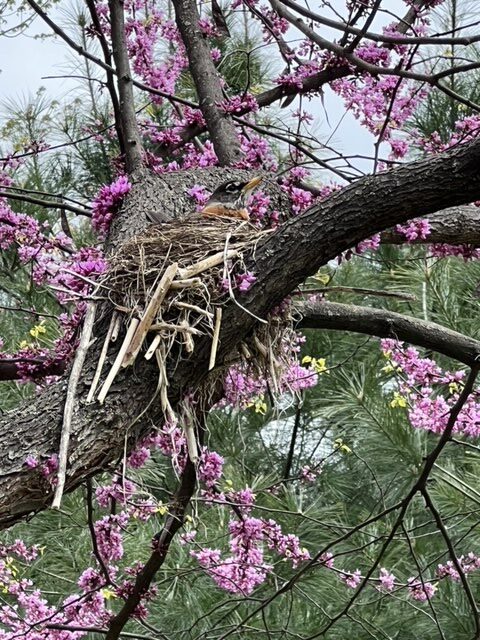
So, hear hear! The Redbuds are coming!
